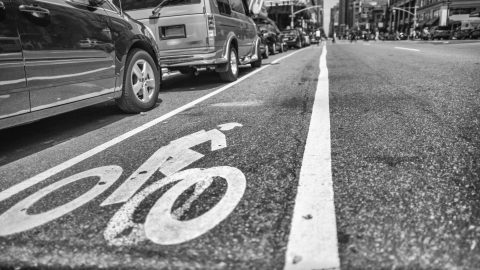If you haven’t already, we recommend renewing your insurance ASAP, so you can get the best possible rate, and don’t expose yourself to the possibility of not getting your insurance renewed on time.
There has been a lot of volatility in the FHV industry for the past few years, but fortunately insurance rates have remained somewhat stable. Experts are saying that renewal rates are holding steady again this year for most drivers.
As a reminder, renewals must be finalized by March 1, but waiting until the last minute can be a costly mistake. It can take up to 72 hours for the Department of Motor Vehicles (DMV) to process paperwork, and you DO NOT want face downtime because your insurance isn’t in place.
As you go about the process of renewing your insurance, it is important to remember the most common reasons for insurance rate increases: at-fault accidents, points on your license from summonses and vehicle age.
It’s also important to remember how to get discounts, so you can make sure you get the best possible rate. We recommend talking to your broker and having all appropriate paperwork at-the-ready. According to Cira Angeles, President of LA Riverside Insurance Brokerage, experienced drivers with newer-model vehicles, zero points on their licenses and no accidents get the best rates – but you can also get rate reductions for having an environmentally-friendly vehicle (hybrid, electric or CNG), an in-vehicle video recorder and/or “collision avoidance” technology.
If you have gone two years without an at-fault accident, you could see up to a 10% discount off your rate – and a third consecutive “accident-free” year could mean an additional 5% off. If you fall into this category, remind your broker to make sure you get the maximum discount.
Loyalty also matters. Sticking with the same insurance provider can often result in “longevity discounts” that start to kick in after three years.
On the flipside, an at-fault accident can drive up your rates 5-10% – or more, if you have multiple accidents. If points were added to your license from moving violations, you can also expect a 5-15% increase in your premium. A couple points may not trigger a rate increase, but brace yourself if you have 5-6 points, or more.
You might not be able to get insurance at all if any of the following have happened to you:
• An accident that resulted in a fatality, where you were considered criminally negligent
• Driving while intoxicated or under the influence
• Ticketed for “failure to stop at a school bus”
• Submitted false documents to the Department of Motor Vehicles
• Filed a fraudulent auto insurance claim (or helped someone else do so)
• Charged with possession (or sale) of drugs
• Used a vehicle while committing a felony
• Had multiple accidents, with significant losses that resulted in injuries
• Ticketed for speeding in a school zone
• Allowed an unauthorized driver to use your vehicle
• Operated an uninsured vehicle
• Failed to report an accident
• Left the scene of an accident before police arrived
• Deemed a “Persistent Violator”
• Ticketed for speeding in excess of 20 miles per hour
Any accident or incident involving a pedestrian or bicyclist needs to be taken very seriously as well. If the pedestrian or bicyclists was deemed “at fault,” make sure you have documentation.
Ms. Angeles also warns that operating a vehicle with a seating capacity that exceeds seven passengers (including the driver) or with a Gross Vehicle Weight Rating over 6,500 pounds can mean higher rates or possibly even prevent you from getting insurance in the appropriate category for a TLC-regulated vehicle.
If you have a vehicle transfer, Ms. Angeles notes that it must be completed by February 16, or you risk being held up for several weeks before insurance is again available to you.

